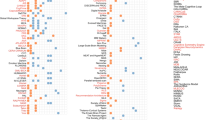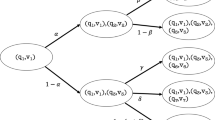Abstract
The foundation of Mathematics is both a logico-formal issue and an epistemological one. By the first, we mean the explicitation and analysis of formal proof principles, which, largely a posteriori, ground proof on general deduction rules and schemata. By the second, we mean the investigation of the constitutive genesis of concepts and structures, the aim of this paper. This “genealogy of concepts”, so dear to Riemann, Poincaré and Enriques among others, is necessary both in order to enrich the foundational analysis with an often disregarded aspect (the cognitive and historical constitution of mathematical structures) and because of the provable incompleteness of proof principles also in the analysis of deduction. For the purposes of our investigation, we will hint here to a philosophical frame as well as to some recent experimental studies on numerical cognition that support our claim on the cognitive origin and the constitutive role of mathematical intuition.
Similar content being viewed by others
References
Bailly F, Longo G (2004) Space, time and cognition. In: Peruzzi (ed) From the standpoint of mathematics and natural science. Invited paper, mind and causality, Benjamins, Amsterdam, pp 149–199
Bailly F, Longo G (2006) Mathématiques et sciences de la nature. La singularité physique du vivant. Hermann, Paris (Introduction in English and in French downloadable; ongogin translation in English)
Bailly F, Longo G (2009) Geometric schemes for biological time. Invited lecture,. In: Boniface J, Miquel PA (eds) Conference on “Episodic memory and time in neurophysiology”, Strasbourg, October 2007 (version française dans “Logique du vivant”, n. 13, Noesis-Vrin)
Banks WP, Coleman MJ (1981) Two subjective scales of number. Percept Psychophys 29:95–105
Banks WP, Hill DK (1974) The apparent magnitude of number scaled by random production. J Exp Psychol 102:353–376
Berthoz A (1997) Le sens du mouvement, Odile Jacob, Paris (English transl. The brain sens of movement, Harvard University Press, 2000)
Bottazzini U, Tazzioli R (1995) Naturphilosophie and its role in Riemann's Mathematics. Revue d’Histoire des Mathématiques 1:3–386
Burr D, Ross J (2008) A visual sense of number. Curr Biol 18:425–428
Cauty A (1988) Sémantique de la mise en signes du nombre : une vision ordinale. Amerindia, 13
Connes A (1994) Non-commutative geometry. Academic Press, New York
Dehaene S (1997) La Bosse des Maths. Editions Odile Jacob, Paris
Dehaene S, Bossini S, Giraux P (1993) The mental representation of parity and numerical magnitude. J Exp Psychol Gen 122:371–396
Dehaene S, Cohen L (2007) Cultural recycling of cortical maps. Neuron 56:384–398
Dubucs J (1999) Beth, Kant et l’intuition mathématique. Philos Sci 3(4):93–134
Enriques F (1935) Philosophie scientifique et empirisme logique. In: Actes du Congrès international de philosophie scientifique, Hermann, Paris
Faracovi O, Speranza F (1998) Federigo Enriques. Filosofia e storia del pensiero scientifico, Belforte, Livorno
Fischbein E (1987) Intuition in science and mathematics, an educational approach. Springer, Berlin
Galton F (1880) Visualised numerals. Nature 252–256
Gelman R, Gallistel CR (1978) The child’s understanding of number. Harvard University Press, Cambridge
Gould S (1989) Wonderful life. WW. Norton, New York
Harrington L et al (eds) (1985) H. Friedman’s research on the foundations of mathematics. Elsevier, North Holland
Herrenschmidt C (2007) Les trois écritures. Gallimard, France
Hilbert D (1899) Grundlagen der Geometrie, Leipzig (trad. fran., Dunod, 1971)
Hubbard EM, Piazza M, Pinel P, Dehaene S (2005) Interactions between number and space in parietal cortex. Nat Rev Neurosci 6(6):435–448
Hunting RP (2003) Part-whole knowledge in preschool children. J Math Behav 22:217–235
Husserl E (1933) The origin of geometry (trad. fran. PUF, 1962)
Izard V, Dehaene S (2008) Calibrating the mental number line. Cognition 106:1221–1247
Jacob SN, Nieder A (2009) Notation-independent representation of fractions in the human parietal cortex. J Neurosci 29(14):4652–4657
Kant E (1944/2004) Critique de la raison pure. Traduction française, 7èmé édition Quadrige, P.U.F., Paris
Kline M (1980/1989) Mathématiques: la fin de la certitude. traduction française, Christian Bourgois éditeur
Lakoff G, Nunez R (2000) Where mathematics comes from: how the embodied mathematics creates mathematics. Basic Books, New York
Longo G (1998) The mathematical continuum, from intuition to logic. In: Petitot J et al (eds) Naturalizing phenomenology. Stanford University Press, Stanford
Longo G (2002) Reflections on Incompleteness, or on the proofs of some formally unprovable propositions and prototype proofs in type theory. In: Callaghan et al (eds) Types for proofs and programs, Durham, (GB), Dec. 2000; Lecture notes in computer science, vol 2277, Springer, pp 160–180
Longo G (2005) The cognitive foundations of mathematics: human gestures in proofs and mathematical incompleteness of formalisms. In: Okada M et al (eds) Images and reasoning. Keio University Press, Tokyo, pp 105–134
Longo G (2007) Laplace, Turing and the imitation game impossible geometry: randomness, determinism and programs in Turing’s test. In: Epstein R, Roberts G, Beber G (eds) The Turing test sourcebook. Kluwer, Dordrecht, The Netherlands
Longo G (2009) From exact sciences to life phenomena: following Schrödinger and Turing on programs, life and causality. Inf Comput 207(5):543–670
Longo (2010) Theorems as constructive visions. Invited lecture, ICMI 19 conference on proof and proving, Taipei, Taiwan, May 10–15 (to appear)
Opfer JE, Siegler RS (2007) Representational change and children’s numerical estimation. Cogn Psychol 55:169–195
Paris J, Harrington L (1978) A mathematical incompleteness in Peano Arithmetic. In: Barwise J (ed) Handbook of mathematical logic. North Holland
Paul T (2007) Discret-continuous and classical-quantum. Math Struct Comp Sci 17:177–183
Petitot J (2008) Neurogéométrie de la vision. Modèles mathématiques et physiques des architectures fonctionnelles, Les Editions de l'Ecole Polytechnique, Distribution Ellipses, Paris
Piaget J (1967a) Logique et connaissance scientifique. Encyclopédie de la Pléiade, Paris
Piaget J (1967b) Biologie et connaissance. Éditions de la Pléïade, Paris
Pica P, Lemer C, Izard V, Dehaene S (2004) Exact and approximate arithmetic in an Amazonian indigene group. Science 306:499–503
Poincaré H (1905/1997) La Valeur de la Science. Champs Flammarion, Paris
Poincaré H (1908/1993) L’invention mathématique. conference published in: Bulletin de l’Institut Général Psychologique. 3:175–187, reprinted following: Essai sur la psychologie de l’invention dans le domaine mathématique (by Hadamard J), éditions Jacques Gabay
Shepard RN, Kilpatrick DW, Cunningham JP (1975) The internal representation of numbers. Cogn Psychol 7:82–138
Smith L (2002) Reasoning by mathematical induction in children’s arithmetic. Chapters 1 and 2. Elsevier Pergamon, Oxford
Starkey P, Spelke ES, Gelman R (1983) Detection of intermodal numerical correspondences by human infants. Science 222:179–181
Starkey P, Spelke ES, Gelman R (1990) Numerical abstraction by human infants. Cognition 36:97–127
Teissier B (2005) Protomathematics, perception and the meaning of mathematical objects. In: P. Grialou, G. Longo et M. Okada (Dir.), Images and Reasoning, Keio University Press, Tokyo, pp 135–146
Tieszen R (2005) Phenomenology, logic, and the philosophy of mathematics. Cambridge University Press, Cambridge
Viarouge A, Hubbard EM, Dehaene S, Sackur J (2010) Number line compression and the illusory perception of random numbers. Exp Psychol (in press)
Visetti Y-M, Rosenthal V (2003) Köhler. Belles Lettres, Paris, France
Walsh V (2003) A theory of magnitude: common cortical metrics of time, space and quantity. Trends Cogn Sci 7(11):483–488
Wigner E (1960) The unreasonable effectiveness of mathematics in the natural sciences. Comm Pure Appl Math XIII:1–14
Wynn K (1992) Addition and subtraction by human infants. Nature 358:749–750
Xuan B, Zhang D, He S, Chen X (2007) Larger stimuli are judged to last longer. J Vis 7(10):1–5
Zebian S (2005) Linkages between number concepts, spatial thinking, and directionality of writing: the SNARC Effect and the REVERSE SNARC effect in English and Arabic monoliterates, biliterates, and illiterate Arabic speakers. J Cogn Cult 5(1–2):165–190
Author information
Authors and Affiliations
Corresponding author
Rights and permissions
About this article
Cite this article
Longo, G., Viarouge, A. Mathematical Intuition and the Cognitive Roots of Mathematical Concepts. Topoi 29, 15–27 (2010). https://doi.org/10.1007/s11245-009-9063-6
Published:
Issue Date:
DOI: https://doi.org/10.1007/s11245-009-9063-6




